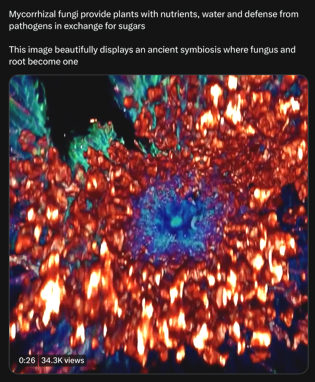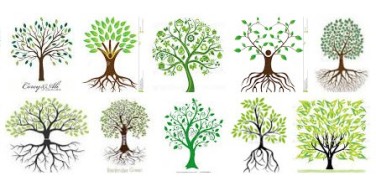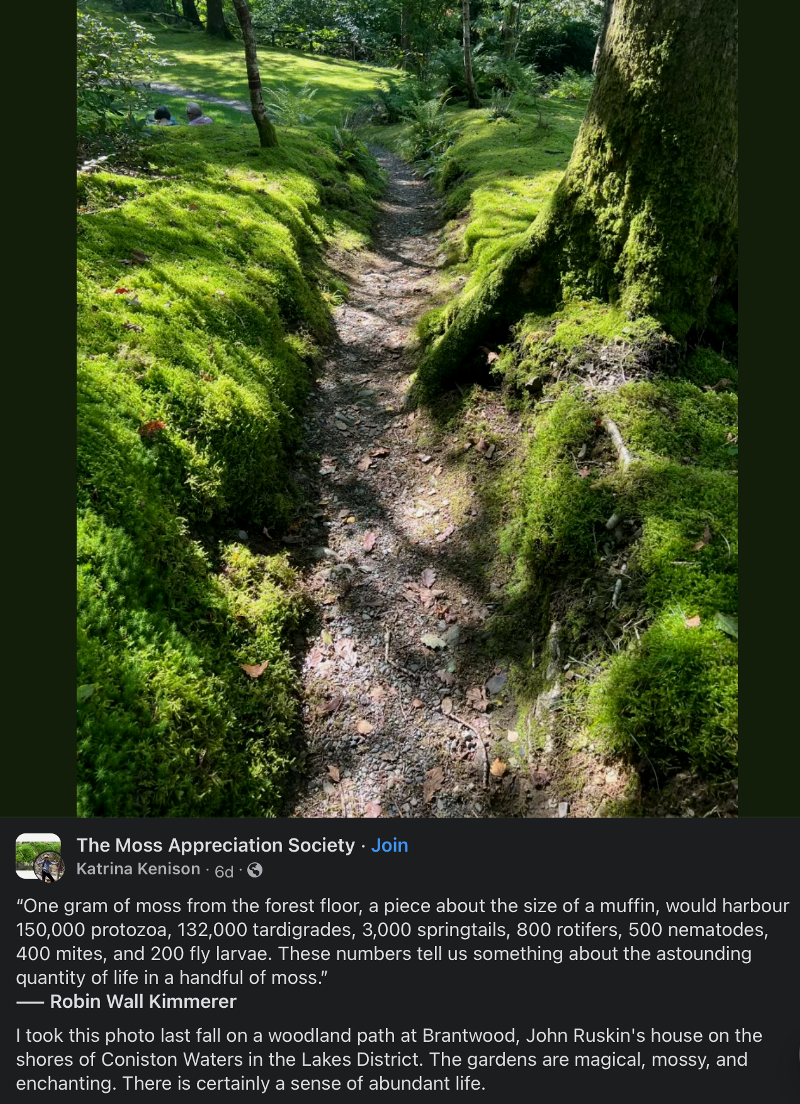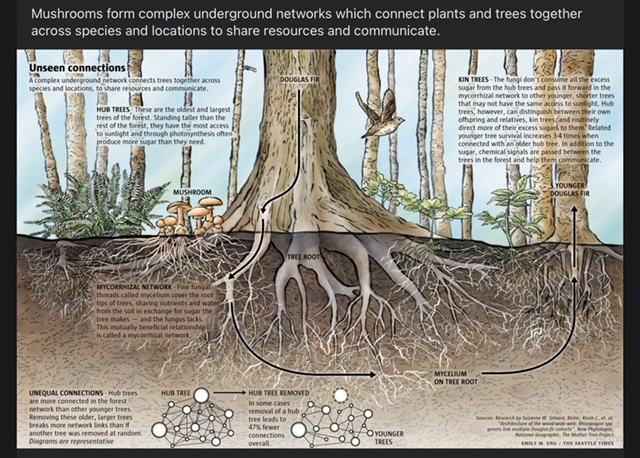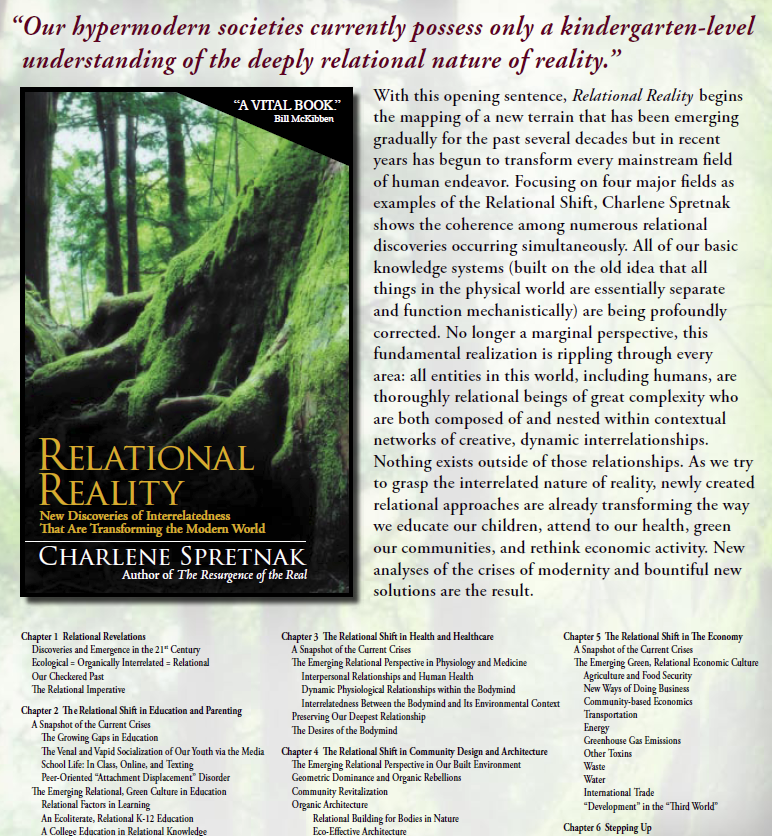File:A root and its mycorrhizal fungus surroundings.PNG
A_root_and_its_mycorrhizal_fungus_surroundings.PNG (315 × 382 pixels, file size: 236 KB, MIME type: image/png)
Image (GIF) via Merlin Sheldrake @MerlinSheldrake
* https://twitter.com/MerlinSheldrake
A laser scan shows a plant root, in blue, enveloped by a mycorrhizal fungus, in red
Mycorrhizal fungi provide plants with nutrients, water and defense from pathogens in exchange for sugars
This image beautifully displays an ancient symbiosis where fungus and root become one
Watch the animation / GIF
More
Entangled Life: How Fungi Make Our Worlds, Change Our Minds, & Shape Our Futures
by Merlin Sheldrake
Excerpts of Reviews:
“Merlin Sheldrake’s marvelous tour of these diverse and extraordinary life forms is eye-opening on why humans should consider fungi among the greatest of earth’s marvels.... Wondrous.” (Time)
A mind-bending journey into the hidden universe of fungi, “one of those rare books that can truly change the way you see the world around you” (Helen Macdonald, author of H Is for Hawk).
Named One of the Best Books of the Year By Time; BBC; Science Focus; The Daily Mail; Geographical; The Times; The Telegraph; New Statesman; London Evening Standard Science
From the Publisher
When we think of fungi, we likely think of mushrooms. But mushrooms are only fruiting bodies, analogous to apples on a tree. Most fungi live out of sight, yet make up a massively diverse kingdom of organisms that supports and sustains nearly all living systems. Fungi provide a key to understanding the planet on which we live, and the ways we think, feel, and behave.
In Entangled Life, the brilliant young biologist Merlin Sheldrake shows us the world from a fungal point of view, providing an exhilarating change of perspective. Sheldrake’s vivid exploration takes us from yeast to psychedelics, to the fungi that range for miles underground and are the largest organisms on the planet, to those that link plants together in complex networks known as the “Wood Wide Web”, to those that infiltrate and manipulate insect bodies with devastating precision.
Fungi throw our concepts of individuality and even intelligence into question. They are metabolic masters, earth makers, and key players in most of life’s processes. They can change our minds, heal our bodies, and even help us remediate environmental disaster. By examining fungi on their own terms, Sheldrake reveals how these extraordinary organisms - and our relationships with them - are changing our understanding of how life works.
🌎
Flora, Fauna and ... Funga | #LivingNetworks ... #Biodiversity ... #Microorganisms ... #TinyLittleOnes ... #LivingEarth ... #EarthSystemScience
As GreenPolicy360 has written over the decades, pay attention to the 'tiny little ones', nature, unseen and connecting life on earth... pay attention to the #Soil, it's more than dirt! e.g. mycorrhizal fungi. Pay attention to the roots, the trees, the forests ... living, interconnected webs of life on our Planet Earth.
* https://www.greenpolicy360.net/w/File:Living_Earth.png
What are mycorrhizal fungi?
Mycorrhizal fungi are a group of network-forming soil fungi that form symbiotic associations with plants. Nearly all plants form symbiotic associations with mycorrhizal fungi. These associations have shaped life on earth for more than 475 million years.
Nearly all plants of Earth form a symbiosis with mycorrhizal fungi. These fungi have altered the evolutionary history of the planet.
See more at -- https://www.spun.earth/networks/mycorrhizal-fungi
🌎
"The deeply relational nature of reality" ...
File history
Click on a date/time to view the file as it appeared at that time.
| Date/Time | Thumbnail | Dimensions | User | Comment | |
|---|---|---|---|---|---|
| current | 23:54, 24 March 2023 |  | 315 × 382 (236 KB) | Siterunner (talk | contribs) |
You cannot overwrite this file.
File usage
The following 6 pages use this file:
- Biodiversity
- Bioneers
- Bioregionalism
- Biosphere
- Climate Policy
- Earth
- Earth360
- Earth Law
- Earth Observations
- Earth Science
- Earth System Science
- Eco-ethics
- Ecological Economics
- Ecology Studies
- EOS eco Operating System
- Forest
- Forests
- Green Graphics
- GreenPolicy360
- Green Politics
- Health
- Land Ethic
- Microbiology
- Microorganism
- Natural Capital
- Natural Resources
- Planet Citizen
- Planet Citizens
- Planet Citizens, Planet Scientists
- Resilience
- Seventh Generation Sustainability
- Soil
- Strategic Demands
- Sustainability
- Sustainability Policies
- ThinBlueLayer
- Wetlands
- Whole Earth
- Wildlife
- Zoology
